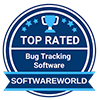Why Poor Decision-Making Drags Down Software Teams and How ZenTao Helps Fix It
Original
-
 ZenTao Content
ZenTao Content -
 2025-06-30 10:00:00
2025-06-30 10:00:00 -
 235
235
Strategic missteps don't usually come from a lack of data. Instead, they arise from the inability to turn data into actionable insights. For project teams and product managers working in fast-paced software environments, the gap between information and decision-making silently undermines progress.
This article explores how structured, data-driven tools like those integrated into ZenTao's project management ecosystem can transform chaotic, intuition-driven decisions into disciplined, insight-backed strategies.
The Hidden Cost of Low-Quality Decisions in Tech Teams
Imagine you’re in a strategy review meeting. The product lead suggests pivoting to a new market. The marketing head hesitates: “What’s the TAM (Total Addressable Market)? Who are the competitors?” The room falls quiet. Everyone feels something, but no one knows anything.
This is not rare. A study from McKinsey found that only 20% of organizations excel at decision-making. Most leaders cite decision failure as a top reason for project delays or wasted resources.
In our work with software teams using ZenTao, we've observed a recurring pattern: decision quality isn’t crippled by a lack of data. The real issue lies in the absence of analytical structure, or a method to convert raw inputs into coherent strategy.
From Gut Feeling to Structured Insight: A Mindset Shift
Traditional decision-making, especially in startups or agile environments, tends to rely heavily on experience and instinct. While useful in early-stage exploration, this approach breaks down as complexity increases.
What’s needed is a framework: repeatable, explainable, and scalable. That’s where integrated decision models like ZenTao’s Decision Analysis feature come into play.
ZenTao embeds tools such as:
- Market Attractiveness Models
- SWOT and PESTEL
- Porter’s Five Forces
- Value Matrixes and Product Prioritization Tools
These models help software teams shift from vague debates to structured analysis. Every component of a decision (such as market potential, competitive intensity, and strategic fit) is scored, weighted, and visualized.
Real-World Application: Choosing the Right Product Direction
Let’s consider a hypothetical example based on a ZenTao user in the EdTech sector.
This company needed to decide whether to double down on the K-12 learning app or expand into adult vocational training.
Using ZenTao’s Market Attractiveness Model, the team analyzed five dimensions:
- Market Size
- Growth Rate
- Profitability
- Competition Level
- Strategic Fit
Each was scored and visualized through a radar chart. The results were clear:
- K-12 had a high growth rate but low profitability and intense competition
- Adult training had moderate growth but better profitability and a more fragmented market
The decision? Reallocate resources to adult education.
This structured breakdown avoided endless debate and focused the conversation around evidence.
Integrated Analysis: No More Tool Fragmentation
Many software teams suffer from a fragmented toolset: they plan in Jira, brainstorm in Miro, document in Confluence, and analyze in Excel.
This patchwork approach creates inefficiencies and data silos.
ZenTao solves this by integrating multiple classic frameworks into a single platform:
- SWOT: Internal strengths and weaknesses vs. external opportunities and threats
- PESTEL: Macroeconomic context including Political, Economic, Social, Technological, Environmental, and Legal factors
- Porter’s Five Forces: Industry competitiveness and bargaining power
- Boston Matrix: Product portfolio strategy
The result? Teams can create holistic strategic documents without toggling between systems.
Decision Modeling for the Non-Analyst
One objection often raised by project leads: "These models are great, but most of our team doesn’t know how to use them."
ZenTao’s solution: Guided Workflows.
Instead of requiring users to manually construct matrices, the system provides:
- Step-by-step input prompts
- Auto-generated visualizations (radar charts, heatmaps)
- Suggested weightings based on context
For instance, in the Market Attractiveness Model, ZenTao might guide a product manager to:
- Enter estimated market size based on survey data
- Assign a growth rate from recent trend reports
- Rate competition based on known players
The platform then outputs a radar chart that makes comparative analysis intuitive—even for non-technical stakeholders.
This democratizes decision quality across the organization.
Beyond the Data: Cultivating a Decision-Making Culture
Technology alone won’t solve poor decision-making. It needs to be paired with process and mindset.
ZenTao fosters this through:
- Transparency: Decisions and their justifications are documented
- Repeatability: Models create an audit trail
- Consensus: Visual outputs align cross-functional teams faster
We’ve seen IT teams become more confident in strategy reviews because the numbers are there, the logic is clear, and the team alignment is measurable.
Final Thoughts: Don’t Let Poor Decisions Derail Great Ideas
The cost of low-quality decisions isn’t limited to budget overruns; it also includes missed opportunities, team burnout, and innovation paralysis.
ZenTao empowers project and product teams to make better, faster, and more confident decisions. By integrating classic strategic frameworks, guiding teams through structured analysis, and reducing tool fragmentation, it transforms decision-making from chaotic to calculable.
Support
- Book a Demo
- Tech Forum
- GitHub
- SourceForge
About Us
- Company
- Privacy Policy
- Term of Use
- Blogs
- Partners
Contact Us
- Leave a Message
- Email Us: [email protected]








